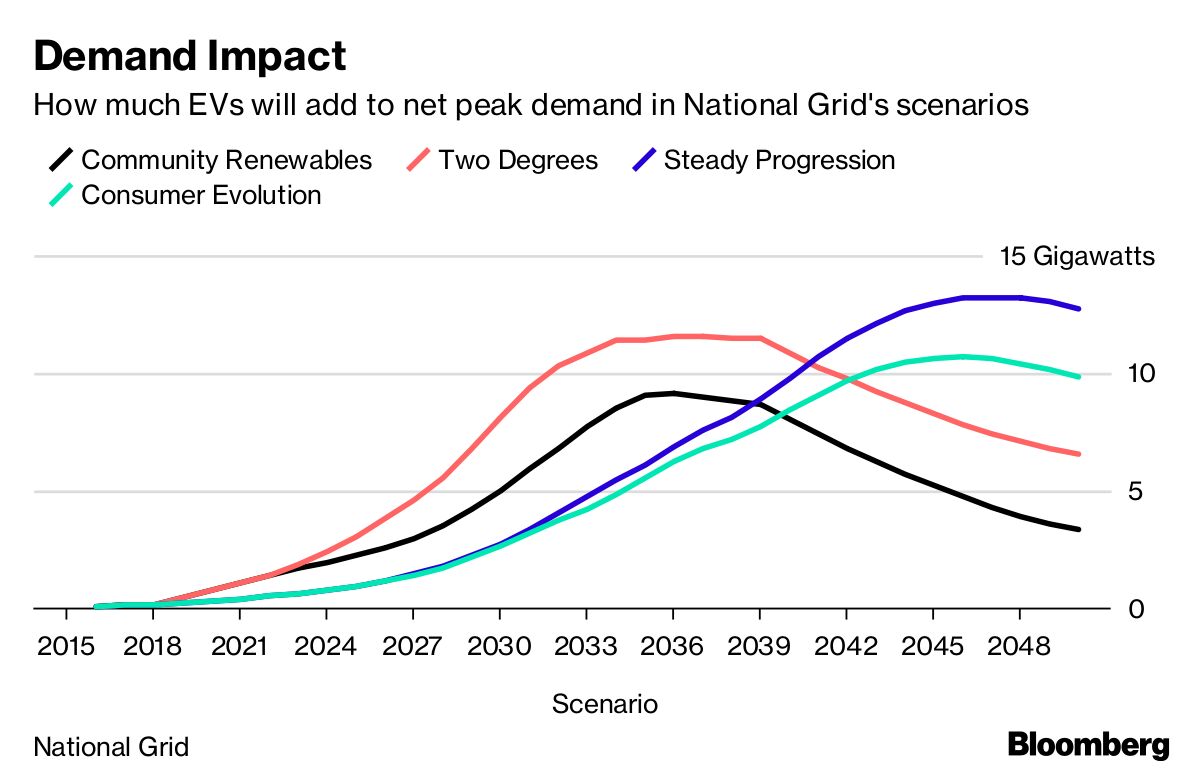
Electric Vehicle Surge Poised to Test U.K. Grid for Decades
Electric vehicles numbers in the U.K. are likely to jump so much that balancing power supply and demand will become even harder for decades to come.
After the renewable energy revolution introduced intermittent supply to test the nation’s main grid company as well as energy traders, the expected jump in EVs will add yet another layer of complexity. There could be as many as 11 million EVs in the U.K. by 2030, National Grid Plc estimates in a report published on Thursday.
That number could grow to as much as 36 million by 2040, according to the company’s Future Energy Scenarios. Electricity demand will increase to fuel the transformation, but exactly how much strain it puts on Britain’s grid system will depend on when people decide to charge their cars.

“The continued growth in electric vehicles, a greater volume of low carbon generation and the advancement of storage technology, are among the major trends,” we are seeing, said Fintan Slye, a National Grid director. “Balancing energy supply and demand will become increasingly complex between now and 2050.”
The takeup of EVs in Britain has been slow with only about 160,000 plug-in cars registered,
according to Next Green Car Ltd. That still makes the U.K. one of the top three markets for the vehicles. The global fleet is expected to more than triple to 13 million by the end of the decade from 3.7 million last year, according the International Energy Agency in Paris. Sales may soar 24 percent per year on average through to 2030.
Energy consumption is predicted to fall in all four scenarios explored in National Grid’s report. Electricity demand by contrast is expected to jump, particularly from 2030 when EVs become more common. If smart charging technologies are developed and consumers incentivized to charge vehicles at off peak times, the increase in peak demand could be as little as 8 gigawatts in 2040, or just 16 percent higher.

Balancing supply from wind farms in Scotland and houses with solar panels in the southwest with demand from EVs in London and factories in the West Midlands will become even more complex in the future, the grid said.
Power flows will also become “more complex and potentially more volatile,” according to National Grid.
High levels of intermittent and inflexible generation will require new levels of flexibility. EVs that can be used as a way to store power and then send it back to the grid when needed could be a key feature in the future system.
Also in the report:
- Gas continues to provide more energy than electricity by 2050 as it remains the dominant form of heating into the 2030s but use for power generation drops as it’s mainly required as back up for renewables not to run around the clock.
- “Gas networks and markets will need to adapt to accommodate changing gas flows and reduced annual demand with more pronounced winter peaks.”
- Hydrogen could heat one third of homes by 2050. This would require
coordinated action to develop city and regional hydrogen networks.
















